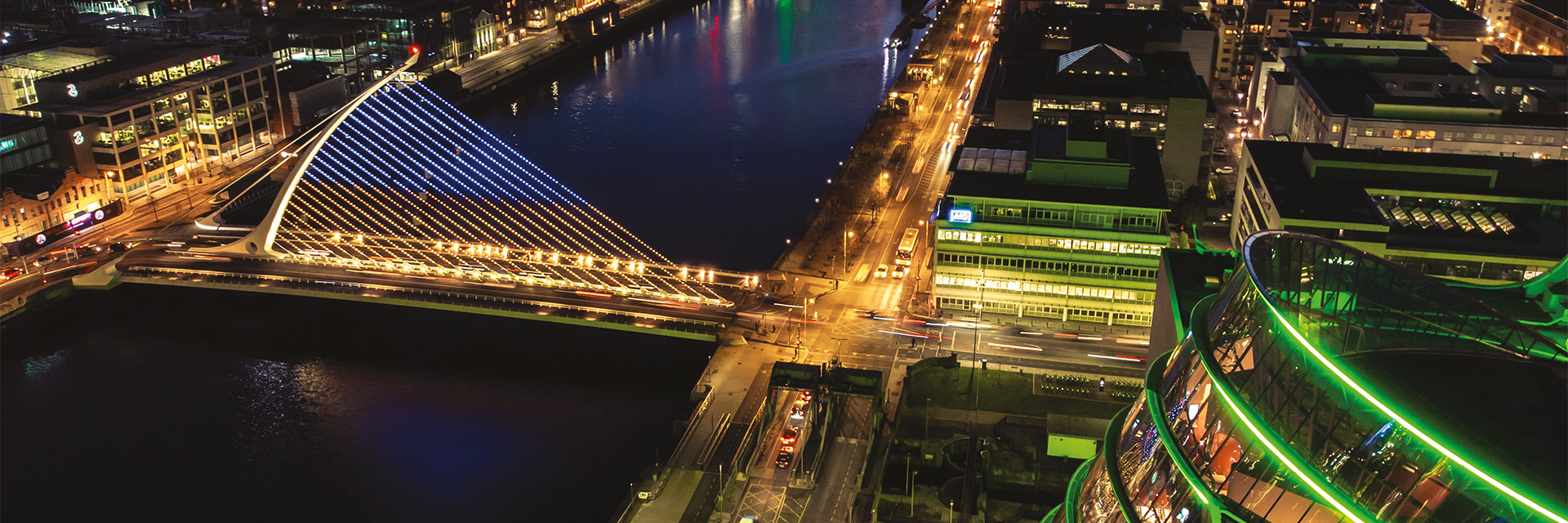Language
Facts
15th out of 34 European countries and 24th out of 190 countries worldwide in ease of doing business.
Foreign Direct Investment (FDI) magnet: 2nd of 92 in Global per Capita rankings, and 4th of 187 according to the World Bank. Today, 257,000 people are directly employed by foreign direct investment (FDI) in Ireland, a 35% increase over five years.
11th out of 39 European countries, 19th out of 132 worldwide in the Global Innovation Index.
Low public debt level compared to average EU: in 2022, Ireland’s public debt was 44.39% of GDP. The national debt of the European Union amounted to approximately 85.24%.
One of the countries with the youngest population: in 2022 in Ireland the median age was 38.8. In Europe, more than one fifth (21.1 %) of the population was aged 65 and over and half was older than 44.4 years.
The third highest European country in educational terms.
Heritage, Culture & Global Connections
Linguistic Landscape
I am Trish. I live in Ireland. Like everyone here, I speak English. Everywhere, to everyone, every day.
Like many, l also speak Irish. But not every day, and not to everyone. English is our primary language while Irish enjoys status as the 1st Official Language of the State! Throughout Ireland, English is the lingua franca, the common tongue.
When we plan or propose, our first thoughts mostly happen in English. Our brains are hard-wired to speak English. It’s how we express our opinions on art, business, economics, travel, leisure, luxury, love, lust, living and dying. A minority are totally fluent in Irish, but of the 30% circa who use it and love it, Irish remains their second language. Whether children would benefit more from learning another foreign language instead of Irish is a question that is regularly asked.
For many, their relationship with our language consists of having a cúpla focail – a few words, often proverbial, used either in social gatherings or when we venture out of Ireland and strive to become ambassadors’ of a dual-language nation.
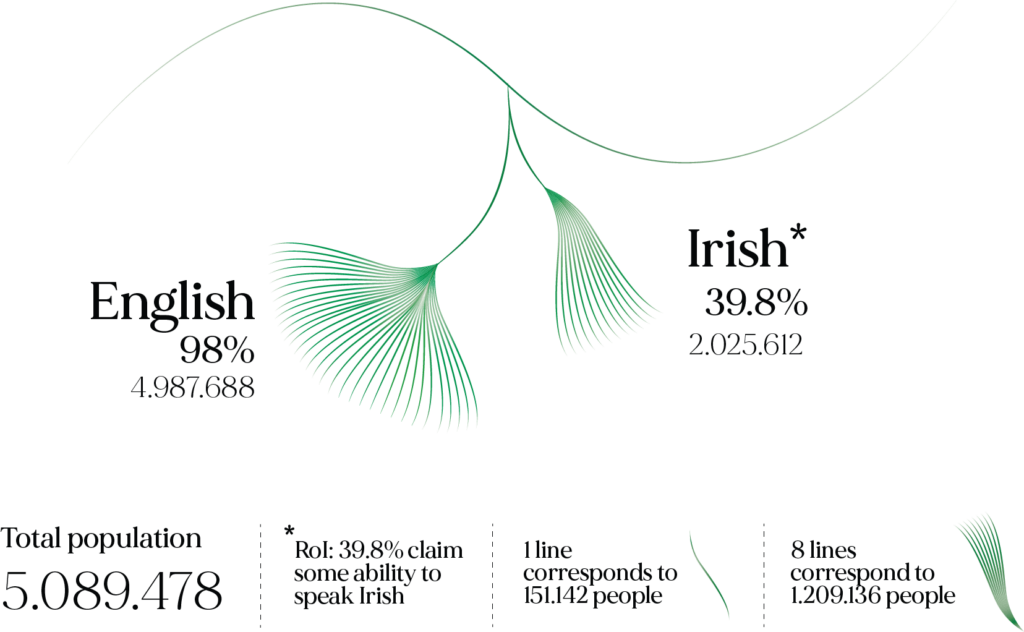
Source: CSO
So, is Irish occupying a growing or declining space on the margins of Irish social and business life? It is hard to be certain; the data is uncertain. A grá (a love) of Irish is reasonably prevalent but not everyone shares the love. One perspective suggests that Irish is becoming more focussed in the urban cities of the east coast, particularly suburban Dublin, and perhaps weakening along the Western Seaboard where Gaelic has always been the common tongue.
Gaelgoiri, as Irish native speakers are known, are mostly held in respect. However, some describe how speaking Irish in creative and cultural endeavors can sometimes feel like being under siege and an act of resistance. Successive Irish Governments actively promote the use of Irish in public information awareness campaigns. Adding a degree of Irish to your media communication programmes will generally be welcomed. The use of professional translation services is advisable as the freely-available Al translations can produce uncertain results.
Are the times changing?
Lovers of trish would like to think so. There is real hope that our younger generation of students attending the ever-growing numbers of Gaelscoileanna will carry their native tongue with them and use it gracefully and gratefully in their future lives.
For generations now, we Irish have been one of the most adept nations on earth in absorbing and adopting influences from abroad and reshaping them to our own national objectives. Ultimately, it’s a matter of living and combining together. The technology we Irish so brilliantly create can shape a heritage- focussed Bi-Lingual Ireland that is part of the greater global world, but still uniquely, quintessentially Irish.
Ar aghaidh leis an eachtra!
Onwards with the adventure!
Economic Landscape
Ireland is a sovereign independent state, with high levels of engagement in democratically-run elections. The Irish Government comprises a democratically-elected parliament – the Dail – and a representative Upper House called the Seanad.
The country is peaceful, progressive and stable. The economy is strong and growing.
The most recent Population Census of Ireland was carried out in 2022 when there were over 5 million people living in the Republic of Ireland, or Eire as the state is officially known. The last time so many lived together on the island was before the Great Famine of the mid-19th century which devastated
a predominantly indigenous rural population through early death and emigration, mainly to America.
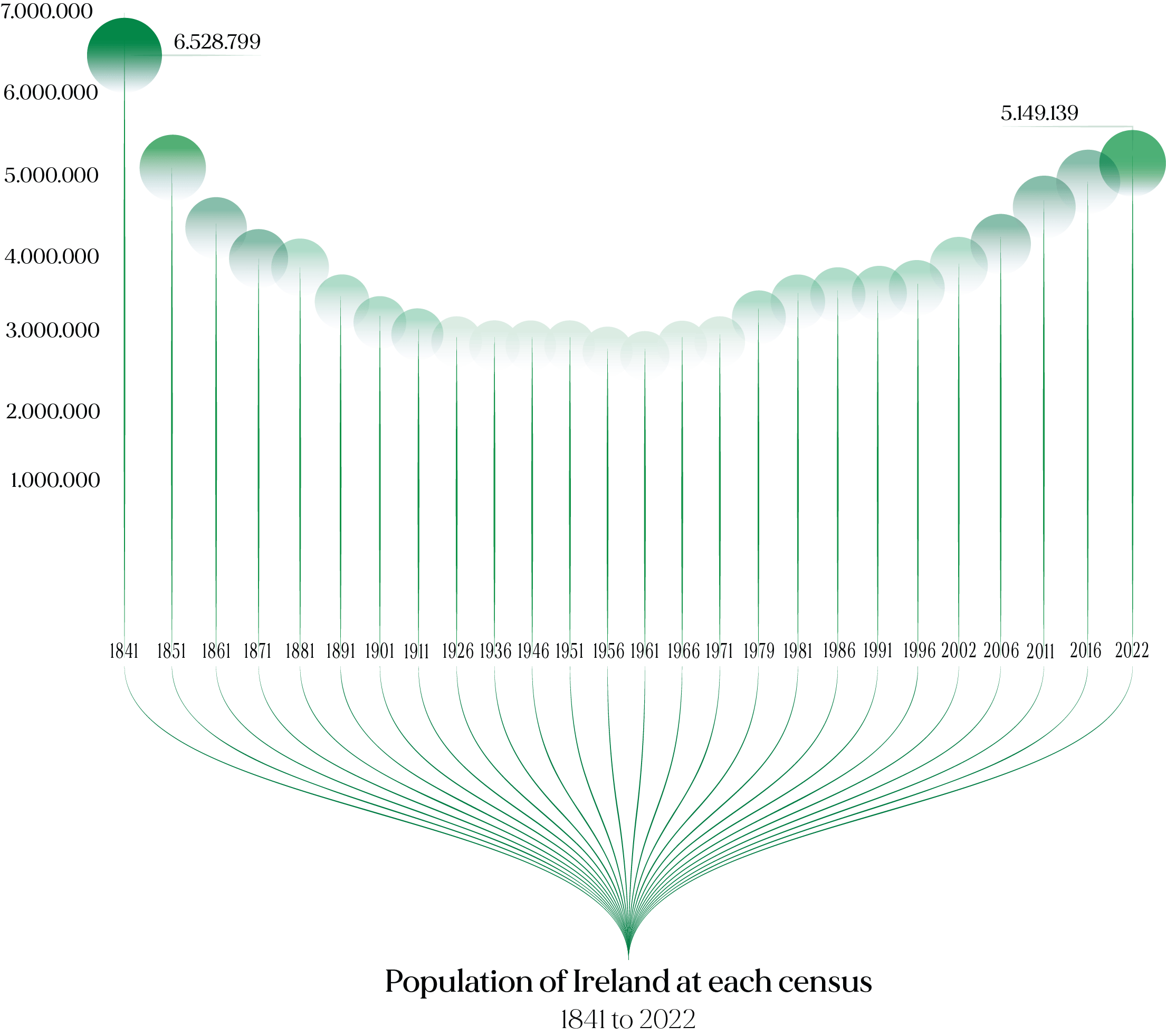
Source: CSO
The 2022 census results further indicate that 20% of the population of the RoI were born outside of
the RoI and that 15% responded in the affirmative to the question, ‘Do you speak a language other than English or Irish at home?’. This represents an increase of 23% on the 2016 figure. Approximately 28% of those who speak a foreign language at home were born in the RoI. The top twelve foreign languages spoken are Polish, Romanian, French, Spanish, Portuguese, Lithuanian, German, Chinese, Malayalam, Arabic, Russian and Italian.
Top 12 Foreign Languages Spoken at Home (Other Than Irish or English)
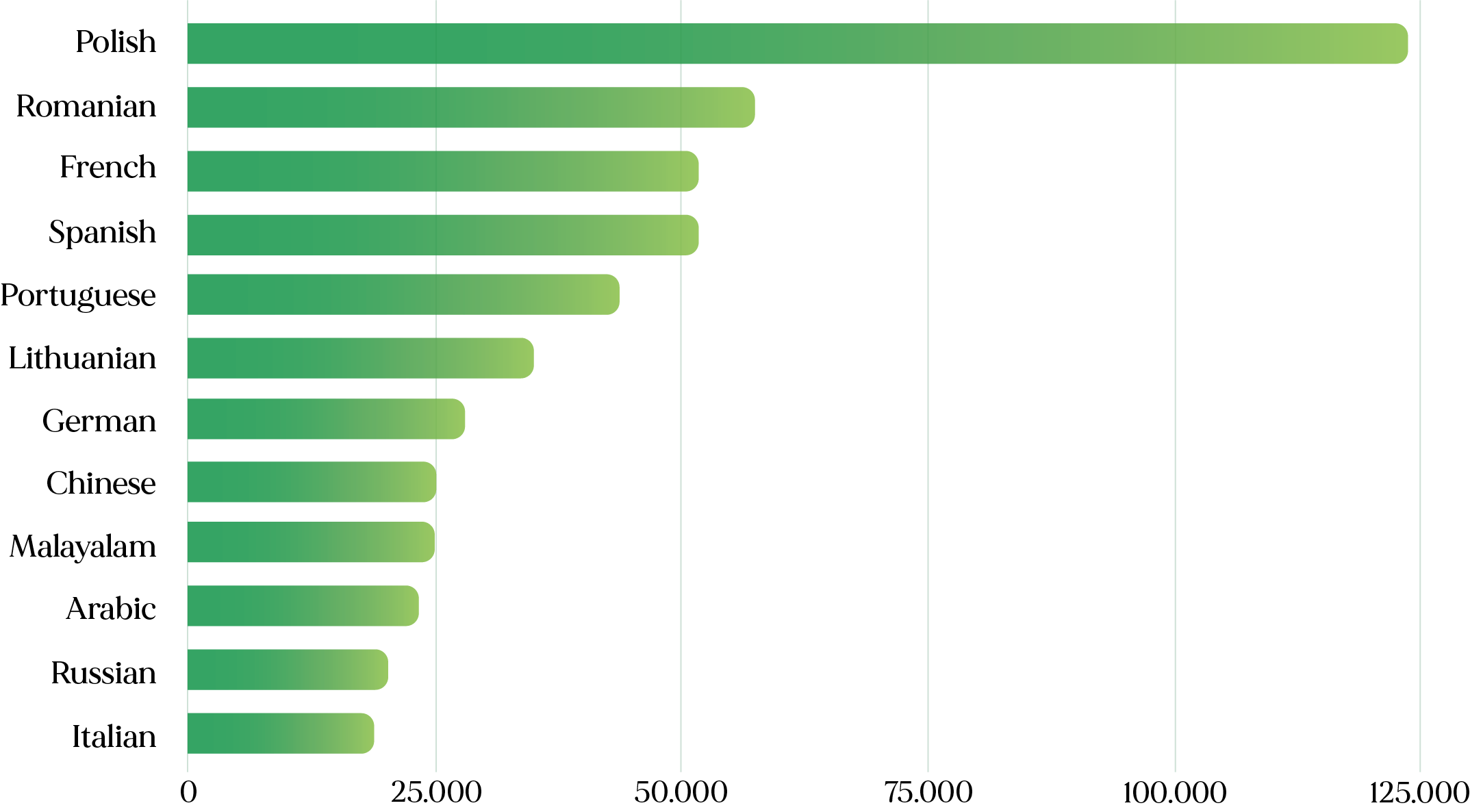
Source: Census 2022 Summary Report
Ireland has long since morphed into a 21st Century economic powerhouse based around a highly developed knowledge economy with an emphasis on services, predominantly in high-tech, life-sciences, financial, and agribusiness including food production. Ireland is part of the European Union, an open economy and a major hub for global innovation.
It consistently ranks:
- 1st in added-value Foreign Direct Investment (FDI)
- 2nd of 92 in Global per Capita rankings
- 4th of 187 according to the World Bank
Global Brand Names such as Apple, Microsoft, Dell all operate profitably here. Many major global technology, pharma, biopharma, media, engineering and financial service companies have significant investment, manufacturing and R&D facilities. In literature, theater and the arts, Ireland has always punched well above its weight. Now the country achieves similar enhanced levels of comparative success in the world of commerce. An eagerness to learn has long been the major driver of Ireland’s economic growth.
A recent study shows Ireland to be the 3rd highest European country in educational terms. Literacy levels are among the highest in the world while demands for university places and other 3 Level study programmes have flourished with 51% of working-age adults having completed higher education by 2022. Irish Universities attract PHD students from every corner of the academic world.
Ireland already has a wealth of experience and expertise in Artificial intelligence. The official policy of Government is for Ireland to become a leading country in using Al to the benefit of our people, through a human centered and ethical approach to Al adoption and use. Ireland is emotionally poised to deliver on such a dynamic symbiotic relationship between human and machine. Our people are good at understanding and proposing human values and human relationships. In Ireland, Al will be a powerful means to a socially- advantageous end. Throughout Ireland, in every facet of our economy, Al in Ireland will play a seminal role by becoming a social, not just a technological, ally.

Ireland
Language Data Factbook
The Language Data Factbook project aims to make the localisation of your business and your cultural project easier. It provides a full overview of every country in the world, collecting linguistic, demographic, economic, cultural and social data. With an in-depth look at the linguistic heritage, it helps you to know in which languages to speak to achieve your goal.
Read it nowCreative cultural localization guidelines
The Colour and Culture of Ireland
Glas is the Gaelic for Green; the globally recognised representative color of Ireland. Green is everywhere.
We have forty shades of it, according to the old song. Ireland uses Green in selling ourselves to the world; the greens of our landscape, the Greenways for cyclists, the emotive and wellness benefits of living in a green natural environment. Green is the color of our national soccer, rugby and athletic teams. Green is our national emblem (the shamrock), our national airline (Aer Lingus). Green is the brand color of many of our exports.
The use of green both as a color in commercial life needs to be founded in authenticity. We don’t demand that people setting up business in Ireland embrace the green space, but if they wish to do so, it should be done in a pragmatic positive way such as engaging directly with Irish producers and suppliers. The Green of Contemporary Ireland is bright, refreshing, ready to engage with the world. Glas is Go.
The multi-cultural colors of contemporary Ireland
Once upon an era, the predominant color of the Irish population was white. But times have changed and new colors have emerged as Ireland embraces significant inflows of migration. Citizens of every country on the planet make their way here to make their homes in Ireland, enriching our gene pool with their own traditions, skills, beliefs, cultures and, yes, colors. Diversity is a relatively recent aspect of the Irish as a nation. But where once, we Irish traveled the world as emigrants, now we welcome migrants from other lands. Ireland is now a multi-cultural people, an integrated society, part of a greater, more colorful world.
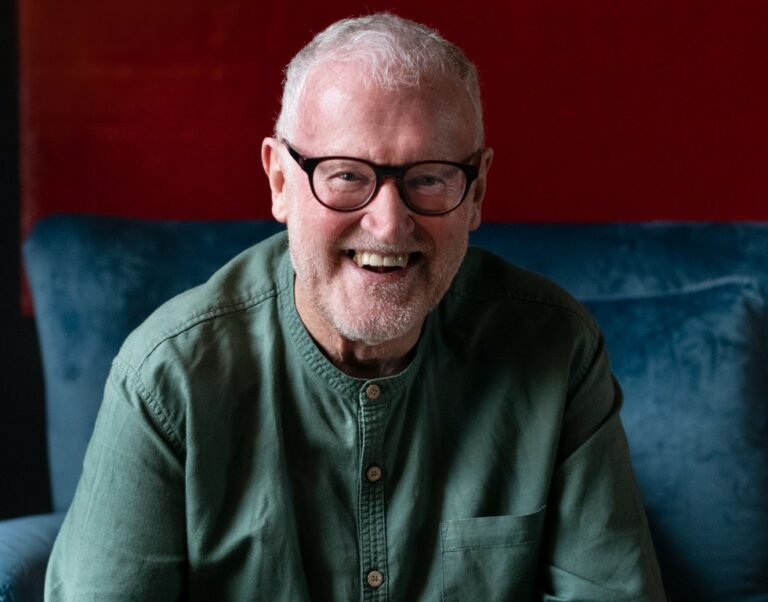
Breandan O Broin
Founder at Company of Words
Breandán Ó Broin is a writer by trade, working in English and Irish. Following an advertising career as an international Creative Director, he founded Company of Words, a communications consultancy, in 2003. He first worked for Translated in Rome in 2018 as an Irish language ‘Transcreator’. He advises State and Semi-State Organisations and corporate and brand clients on the implementation of the Irish Language Act and on integrating the language into internal and external communication strategies. He also works as a media commentator, journalist and as a book editor. He was awarded an Honours MA Degree in Screenwriting in 2009. Breandán lives in Dublin and works where the world takes him.
